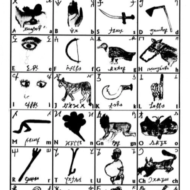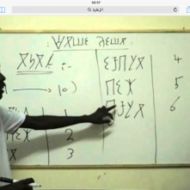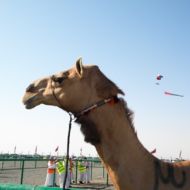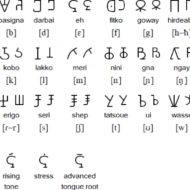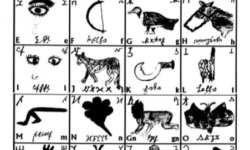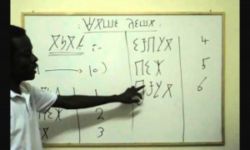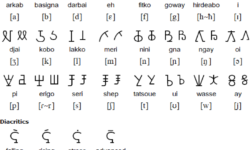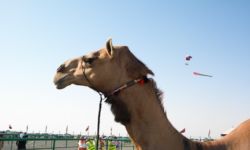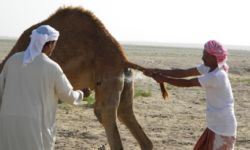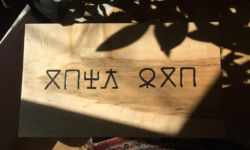Details
One of the main values of an indigenously created script is that it reflects something specific and unique about its culture of origin. As such, one of the most distinctively indigenous scripts is Beria, created to write the Zaghawa language of Chad and Darfur, in western Sudan. The script is based on one of the culture’s most iconic figures: the camel.
In the 1950s, a Sudanese Zaghawa schoolteacher named Adam Tajir created an alphabet for his people’s language whose characters were derived from the clan brands used for camels and other livestock. Its name is Beria, or sometimes the Beria Branding Script.
Beria has the two ideal qualities of indigenous alphabets: it looks like nobody else’s script, and it gives hints of its own origins. Handwritten scripts tend to show the lateral flow of the hand, the turn of the wrist; Beria, however – crisp, uniform, slightly industrial, almost geometrical – looks like a series of symbols to be stamped rather than written.
This script, though innovative and indigenous in the best sense, turned out not to be ideal for representing the sounds of the Zaghawa language, as it was based on the Arabic script. Under the circumstances, perhaps it’s not surprising that the person who remedied its shortcomings was a vet. In 2000, a Zaghawa veterinarian named Siddick Adam Issa created a modified version of the Beria script, which he called Beria Giray Erfe (“Writing Marks”).
Even though the Zaghawa inhabit one of the driest and poorest areas in the world, ravaged by decades of civil war, supporters of the script created a YouTube channel for reading and writing lessons in Beria. AlSadig Sadig, a native of Darfur, became possibly the first person to try to digitize an emerging script by crowdfunding:
I was born in … a small village in the Darfur region of Sudan, in 1987. As children, me and my friends were beaten just for speaking our own language. Since then, it has been a dream that I share with many others, to make it possible for us not only to speak Beria freely, but also to be able to read and write it!
The first schoolbook in Beria has just been published. The Beria-English Dictionary, though it does not use the Beria script, is full of culturally rich translations, such as dabara: a blister, especially on a camel’s back after a long day of racing; dabo: the season between November and January, when the herds are dispersed toward pastures to the northeast, the grain is beaten and stored and the markets are more intensely frequented; and dabûrû: a camel that has not given birth.
–Edited and updated by Eddie Tolmie.
You can help support our research, education and advocacy work. Please consider making a donation today.

